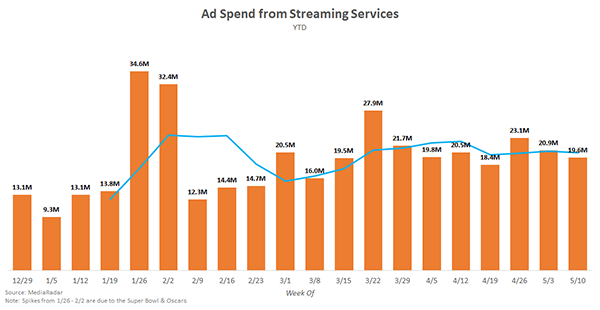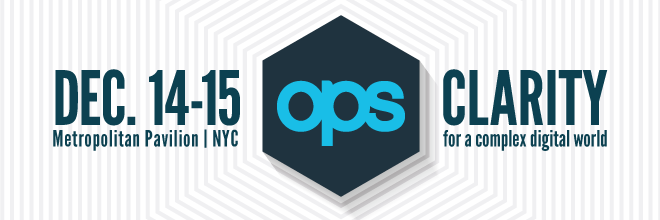 |
|||||||||||||||||
|
|||||||||||||||||
| Leave 230 Alone |
| We do try to stay out of politics here at AdMonsters, but sometimes politics comes knocking on our door. Because Twitter had the audacity to fact-check him, President Trump decided to pull out a card he’s likely been hanging over the heads of social media platforms for a while: potentially stripping away the protections of SECTION 230. Section 230 sounds like some awesome group of British spies (we’re composing the theme song in our heads), but in truth, it’s the most emo part of the Communications Decency Act—“one of the internet’s most important and most misunderstood laws,” writes The Verge. Actually, the history of Section 230 is a fun-filled trip through the history of the Internet (Prodigy! We are old enough to remember and possibly have used Prodigy!), but the premise is quite simple: “interactive computer services” cannot be sued over what users post on them. Thus the web is safe for publisher comment sections and social media platforms… Well, it frees media companies from most liability of the often less-than-glamorous world of UGC. But this code has drawn a lot of ire over the last few years, especially after the 2016 elections, with some politicians blaming the law for a lack of content moderation and others saying it somehow empowers bias against certain political views. Both are pretty limp arguments. The Trump Administration’s executive order on Section 230 could potentially enable regulators to strip specific platforms of “good faith” protections under the law. Yeah, it’s kinda convoluted, but it’s clearly a threat. |
| All of this rancor happens to coincide with resentments held in digital media. You see, Section 230 also protects digital media companies from being sued if they run false ads or scams (unless they do so knowingly—say, they are accomplices). And social media has a real problem with this kind of grifting as it’s easy to set up campaigns on self-serve platforms with instant or near-instant approval. By the time they get flagged, the platform has already made some cash… These platforms are also the walled gardens that are grabbing the lion’s share of digital ad spend and squeezing the open advertising ecosystem, so the theory seems to be that tightening up (or even squashing) 230 would… Level the playing field? Take away a smidgen of the Duopoly’s revenue? Here’s a problem with that—as we covered recently on AdMonsters Discourse, malvertising is at an all-time high during the pandemic. Even with good creative scanning and blocking, some scummy creative is going to make it on your site via programmatic, and without 230, you’re potentially liable. There are arguments for reform of 230, but even then no one seems to have good answers for what a new and improved 230 would look like. The president screaming about revoking 230 seems ridiculous because as a massive ball of liability, he’d be first off the platform. TLDR: Leave 230 alone. You got other fish to fry. |
| Streamers Dropped a Bag on Ads During Pandemic |

Source: MediaRadar
|
| It just so turns out that it’s not just gaming that has been media’s bright spot during this pandemic. MediaRadar points out a significant increase in ad spend coming from the streamers since March, driven by the recent launches of HBO Max and Quibi. But we can’t forget the mass of eyeballs glued to their OTT screens as a catalyst once stay-at-home orders were enforced around the land. The advertising research company also noted that Disney + Hulu and Amazon Prime Video had upped spending during the pandemic. In total, advertising spend coming from premium video streaming services shows an 87% gain over the same period last year. And, since March 1, on average, all services have dropped about $20 million per week on TV, digital and print. According to Adweek, Disney + Hulu were TV’s largest benefactor, spending approximately $38.3 million on linear March 15-May15 and another $15.5 on Disney-owned networks, totaling $53.8 million for the period. Speaking of the wonderful world of OTT, Pixalate reports that after an initial drop of 14% due to COVID in March, programmatic CTV/OTT ad spend rose 40% April-May. |
| Apparently, not all media is created equal. We’ve talked ad nauseam about the declining media ad spend amid the pandemic and the terrible toll it has taken on digital media, especially our sorely needed local media outlets. The surge in readership has not panned out quite the same way the surge in viewership or gaming has. While all media initially took a hit at the onset of Coronavirus, new media has been hit the hardest and it will take a lot more work for a rebound. That’s also not to say that Disney is totally unscathed. Sports network ESPN lost millions when all sports events went on indefinite pause. It’s too soon to say what the future will hold, but there's likely to be a lot of M&As and fire sales on the horizon. Yet, there’s a glimpse of sun, just a ways beyond the clouds. Analysts already predict that VOD platforms will be the ones to pull us out of this slump. |
| Seek Partners, Not Vendors | ||
 |
||
| A simple statement, now more important than ever before. In this current business climate, the value of true partnerships, both personal and commercial, is at an all-time high. In fact the world’s leading pharmaceuticals companies realize that this is what it will take to halt the COVID-19 pandemic, "One of the biggest points made from the outset is the need for partners. No one company will create a vaccine for this pandemic on their own." It’s a lot like how Jay Friedman, President at Goodway Group talks about publisher-agency relationships—pubs gotta meet agencies in the middle—in a recent episode of AdMonsters Discourse. A shoulder to lean on, a hand to hold, a relationship that adds value is what we all crave. Vendors pitch their products and services: partners instead focus first on what’s important to you. In our businesses, that’s efficiency, cost savings, quality and the bottom line. |
||
| You want to work with partners whose products and services can become the difference in the very survival of your business, especially in a time like this. Be it supply chain optimization, data management or actual incremental revenue and income, partners that contribute to your bottom line will save your jobs, the future of your company, and be essential to our ability for discovering what the “new” normal will be all about. Check out how a partnership with Duration Media can bring incremental revenue and add to your bottom line today. |
||
|
||
 |
| The Evolving (But Short-Lived) CMO |
| With brands getting more involved in media-buying—and some publishers sensing an opportunity to serve agency-type roles for brands—understanding the ways of the brand marketer has become more important on the sell-side. In particular, a new study revolves around one mysterious figure: the Chief Marketing Officer. Fortunately, recruiting firm Spencer Stuart offers us an intriguing look into the lifespan of a CMO… Which appears to be rather short. The average tenure of a CMO dropped from 43 months to 41 months from 2018 to 2019, though the median tenure in 2019 was… 30 months. And that was up from 26 months in 2018. Sixty percent of those surveyed had held their positions for 36 months or less. At the same time, more CMOs are now women—43% in 2019 compared to 36% in 2018 and 28% in 2017. Nearly half of all CMOs that grabbed that position in 2019 were women, and 19% were from “racially and/or ethnically diverse backgrounds” compared to… (gulp) 0% in 2018. Also, 72% of those surveyed by Spencer Stuart sat in the CMO chair for the first time. |
| Shorter tenures but more diverse points to a purse-string holding role in deep flux, right when we keep hearing about the rise of the Chief Marketing Technology Officer. The future of the role may not be obvious, but there would seem to be an opportunity here for premium publishers to build connections with newer CMOs looking to prove themselves by taking risks. |
| Is It the Year of the Podcast Yet? |
| If you’ve been around the digital media industry for the past 10 years or so, then every year since you’ve been sold on the idea that—dun, dun, dunnn—this year podcasts will rule. AdMonsters Senior Editor Lynne d Johnson bought the Kool-Aid 100%, but back then writing about how podcasts would take over radio, but the truth was there really weren’t a lot of people tuning in back then. It was just a bunch of early aughts bloggers and early tech adopters smelling themselves though. Well, things certainly look substantially different today. eMarketer reports that in 2019, the US podcast audience swelled to 92 million monthly listeners, spurred by some serious cash infusions by major audio streaming services aimed at putting podcasts more in your face, erm, ears. Most notably, Spotify laid down $400 milli to scoop up Gimlet, Anchor and Parcast in 2019. And more recently everyone is chirping about them acquiring exclusive rights to the ever-so-popular Joe Rogan Experience for roughly $100 milli. I guess you could say that now that Spotify has won the streaming audio wars, their now staking their bets on podcasting. Pandora has been all hands in on podcasts as of late as well. Right now, people are more tuned into radio as a source of news and information than they have been in what seems like forever. Not surprisingly, the increase in podcast listeners is coming from AM/FM radio and as more people discover smart speakers as they work from home, we can expect that shift to increase. It could finally be the year of the podcast. |
| Here’s the thing. Spotify is to user-generated podcasts, what YouTube is to user-generated video. And it looks like we’re not the only ones thinking that way. Hank Green in the Washington Post writes, “Spotify wants to become...the default platform for both listeners and creators. And that should worry people in both of those groups.” If Spotify becomes the go-to-platform for podcasters what would it mean to a community that thrives on being open? We’re guessing it means Spotify would be a podcaster’s walled garden with lots of power over individual creators and also be in a position to set the trends for how podcast advertising works. And if Spotify really has the coffers to keep making exclusive rights deals, it's going to become the kind of dominant force in the industry that leaves little room for the competition (especially the little guys) and it will give creators no other choice but to join the ranks. No cap. |
 |
||||
 |
||||
|
||||
 |
||||
|







